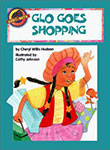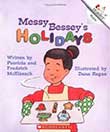Lessons for Teaching Grade 2
It is never too soon to introduce basic economics and personal finance concepts. In fact, kids often form their spending and saving habits as early as age 7. Here are some great lessons you can use to integrate personal finance and economics into your second grade classes in reading, language arts and mathematics. Kids can practice important language arts and mathematics skills while learning about making choices, saving, goods, services and more.
A Chair for My Mother Lesson

In this lesson, students read A Chair for My Mother, about a little girl and her family who save money to buy a chair after their furniture is destroyed in a fire. Students learn that characters in the book are human resources who save part of the income they earn. Students identify other human resources, discuss how their work allows them to earn income and name strategies that will help them reach a savings goal. (Book by Vera B. Williams / ISBN: 068804074-8)
Alexander, Who Used to Be Rich Last Sunday Lesson

In the story, Alexander, Who Used to Be Rich Last Sunday, Alexander receives a dollar from his grandparents that he plans to save, but he spends it all, a little at a time. In this lesson, students count by twos to fill a container with 100 pennies. They are asked whether 100 pennies is the same amount of money as one dollar. They listen to the story and as Alexander spends his money, students come up and remove the correct number of pennies from a container. At the end of the story, students are again asked if 100 pennies is the same amount of money as one dollar. Students discuss the choices that Alexander made and give advice on how he could save his money to reach his goal of buying a walkie-talkie. (Book by Judith Viorst / ISBN: 0-689-71199-9)
Curious George Saves His Pennies Lesson
In the story Curious George Saves His Pennies, George wants to buy a new bright-red train, but he does not have enough money. At the suggestion of his friend, George saves his money to buy the train.
In this lesson, the students draw an outline of a piggy bank, within which they write a word for or draw a picture of something they would like to buy. This becomes their savings goal. They listen to the story, and as George finds some ways to earn money, the students come up with ways they can earn money to reach their savings goals. Students are introduced to the difference between income and gift money. They participate in an activity where they determine if they are receiving income or gift money and how many weeks it will take them to reach their savings goal. Students also discuss why George did not buy the original red train he wanted. (Book by Monica Perez / ISBN: 978-0-547-81853-5)
Glo Goes Shopping Lesson

In this lesson, students listen to the story Glo Goes Shopping. They learn about saving, spending, decision making and opportunity cost. They learn to use a decision-making grid to make decisions. Mathematics skills include learning about rows and columns in a grid.
Just Saving My Money Lesson

In this lesson, students learn about saving, savings goals, and income. They listen to the book Just Saving My Money by Mercer Mayer, a story about how Little Critter saves his money to buy a skateboard. Students use clues in the book's text and pictures to answer questions. After listening to the story, students play a game where they each have a savings goal, earn income, and save money until that savings goal is met. Students write math sentences to determine whether they have saved enough to reach their goals. Students also set their own savings goals and tell how they could earn income to meet them. (Book by Mercer Mayer / ISBN: 978-0-06-083557-6)
A Q&A is also available to use with the book.
Messy Bessey's Holidays Lesson

In the book, Messy Bessey's Holidays, Bessey wants to make holiday cookies to give as presents to her friends. In this lesson, students learn the factors of production, natural resources, human resources and capital resources (capital goods); as well as the intermediate goods used in making cookies. As assessment of knowledge, students classify factors of production and intermediate goods. (Book by Patricia and Fredrick McKissack / ISBN: 0-516-26476-1)
Money, Money, Honey Bunny! Lesson

In this lesson, students listen to a story written in rhyme about a bunny who has a lot of money in her piggy bank. Students distinguish between spending and saving and goods and services. They play a matching game to review the content of the story and to practice rhyming words. (Book by Marilyn Sadler / ISBN: 0-375-93370-0)
A Q&A is also available to use with the book.
Sheep in a Shop Lesson

In this lesson, students listen to a story about sheep that go shopping for a gift. Unfortunately, they don't have quite enough money and must barter wool to obtain the gift they want. The students discuss what barter is and suggest other solutions to the sheep's problems. Students earn cotton balls and pennies for work that they do. They use the cotton balls to decorate a sheep and use extra cotton balls and pennies to buy additional decorations for their sheep. (Book by Nancy Shaw / ISBN: 978-0-395-70672-5)
A Q&A is also available to use with the book.
---
If you have difficulty accessing this content due to a disability, please contact us at economiceducation@stls.frb.org or call the St. Louis Fed at 314-444-8444 and ask for Economic Education.

